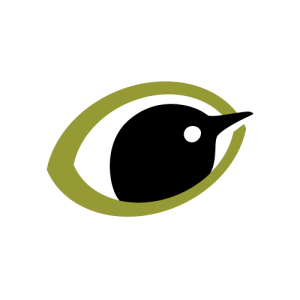Citation

Overview
New research from BTO has used GPS tracking to investigate the feeding preferences of breeding Herring Gulls at a declining colony, and found that these birds are more likely to be foraging on Mussels than pilfering your lunch.
In more detail
Despite their fearsome reputation, breeding Herring Gull numbers are declining at many formerly important sites and this species has been on the Birds of Conservation Concern Red List since 2009. New research by BTO has used GPS tracking to investigate the movements of Herring Gulls breeding at South Walney, Cumbria. Declines at this well-studied colony mean breeding numbers are currently approximately a tenth of those counted in the late 1980s, when the colony peaked at approximately 11,000 apparently occupied nests.
Approximately 75% of fixes from the GPS tags attached to the 24 individuals tracked came from intertidal and near-shore habitats, and in particular Mussel beds, when birds were away from the breeding colony. It is likely that birds were visiting these areas to feed. Previous studies of Herring Gulls breeding at South Walney had shown the importance of landfill as a food source, but local tips have since closed, likely contributing to the reduction in the colony's size. Interestingly, none of the tracked birds specialised in foraging in urban habitats, so are not likely to come into conflict with humans in this environment, where they can be perceived as a pest. However, the birds' specialisation on Mussel beds shows the importance of managing shellfisheries in a way that meets the needs of both humans and Herring Gulls in order to mitigate further declines at this colony.
This work was funded by Natural England and was based on data collected as part of a study funded by the Department of Energy and Climate Change (DECC), now the Department for Business, Energy and Industrial Strategy (BEIS) and our thanks to John Hartley of Hartley Anderson for support of this work. Land Cover Map 2015 were provided under a Contractor Licence (Licence number 100017572) issued to Natural England. Gary Brodin at PathTrack Ltd provided technical support on data downloads and interpretation. We are very grateful to Sarah Dalrymple, Peter Jones, Matt Lipton and Lawrence Eagle (Cumbria Wildlife Trust) at South Walney for assistance with setting up the tracking systems and monitoring, and Emily Scragg, Rachel Taylor, Sarah Harris and Katharine Bowgen for their assistance in the field.
Additional support for this paper was provided from funding received from Gifts in Wills, for which we are extremely grateful.
Abstract
Individual foraging specialisms among generalist species can have important consequences for demographic rates. We investigated the habitat preferences of breeding Herring Gulls (Larus argentatus) at South Walney, a declining coastal colony in the UK, comparing results to a previous assessment made three decades before, when the breeding population was higher, which indicated substantial use of terrestrial, intertidal and anthropogenic resources. We used a two-stage Resource Selection Function (RSF) analysis to assess the habitat selection of 21 Herring Gulls fitted with GPS tags over three breeding seasons (2014-16). By generating pseudo-absences within the minimum convex polygon surrounding individual level GPS fixes, we first used logistic regression models to relate presence/absence for each individual to habitat. Selection for mussel bed areas was also modelled specifically as a function of phase of tide, time of day, period within the breeding season, year as well as individual covariates of mass, sex and hatching success. Second, individual RSF coefficients were extracted from the logistic regression models and used as response variables in linear models.
Herring Gulls significantly selected for mussel beds and other coastal habitats (75% of all fixes away from the colony occurring in these habitats). Selection for mussel bed sites was significantly greater during the first half of the breeding season, March-May, compared with June-August, while there was also significant positive selection for this habitat between -3 and -2 m tide height (ordnance datum).
There has been an apparent reduction in the range of food resources utilised by Herring Gulls at South Walney in recent years with a greater propensity for intertidal specialists within the tracked sample and, in particular, little use was made of urban and landfill areas. Therefore, better understanding of the intertidal resources available and considered management will be beneficial to balance the needs of conservation and commercial and social interests of the nearby shellfisheries.




